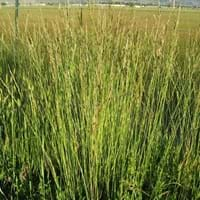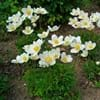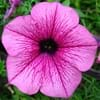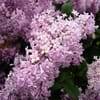Life Span
Perennial
Perennial
Type
Tender Perennial
Grass
Origin
Mediterranean
Hybrid origin
Types
Blue Anemone, Greek Windflower, Carolina Anemone, Chinese Anemone
Alta fescue, Kentucky fescue
Habitat
Wild
meadows, Well Drained, yards
USDA Hardiness Zone
8-12
5-8
Sunset Zone
4, 5, 6, 7, 8, 9, 10, 11, 12, 13, 14, 15, 16, 17, 18, 19, 20, 21, 22, 23, 24
A1, A2, A3, 1a, 1b, 2a, 2b, 3a, 3b, 4, 5, 6, 7, 8, 9, 10, 14, 15, 16, 17, 18, 19, 20, 21, 22, 23, 24
Habit
Clump-Forming
Clump-Forming
Minimum Height
Not Available
Flower Color
Sky Blue
Pale White
Flower Color Modifier
Not Available
Bicolor
Fruit Color
Not Available
Non Fruiting Plant
Leaf Color in Spring
Green
Blue Green
Leaf Color in Summer
Yellow, Green
Light Green
Leaf Color in Fall
Not Available
Blue Green
Leaf Color in Winter
Not Available
Green, Tan
Leaf Shape
Compound
Grass like
Plant Season
Spring
Spring, Fall
Sunlight
Partial Sun, Partial shade
Full Sun, Partial Sun
Type of Soil
Loam
Clay, Loam
The pH of Soil
Acidic, Neutral
Neutral, Alkaline
Soil Drainage
Average
Average
Bloom Time
Early Spring, Spring, Late Spring, Early Summer
Not Available
Tolerances
Salt
Not Available
Where to Plant?
Ground, Pot
Ground
How to Plant?
Seedlings
Seedlings, vegetative cuttings
Plant Maintenance
Medium
Medium
Watering Requirements
Medium, Prefer drip-irrigation instead of Over-head watering, Use Mulches to help prevent water loss during hot and windy weather, Water Deeply
Allow to dry out slightly between watering, Never Over-water
In Summer
Lots of watering
Lots of watering
In Spring
Moderate
Moderate
In Winter
Average Water
Average Water
Soil pH
Acidic, Neutral
Neutral, Alkaline
Soil Type
Loam
Clay, Loam
Soil Drainage Capacity
Average
Average
Sun Exposure
Partial Sun, Partial shade
Full Sun, Partial Sun
Pruning
Prune prior to new growth, Remove dead or diseased plant parts, Remove deadheads
Prune after flowering, Prune for size control, Remove dead or diseased plant parts
Fertilizers
All-Purpose Liquid Fertilizer
All-Purpose Liquid Fertilizer
Pests and Diseases
Botrytis collar rot, Crown gall, Cucumber mosaic, Downy mildew, Impatiens necrotic spot, Leaf curl, Phytophthora, Rhizoctonia crown rot, Root rot, Rust, Sclerotinia blight, Southern blight
Brown patch, Gray leaf blight, Pythium blight, Rust, Zoysia patch
Plant Tolerance
Drought
Full Sun, Heat And Humidity
Flowers
Showy
Insignificant
Flower Petal Number
Single
Single
Foliage Texture
Fine
Medium
Foliage Sheen
Matte
Matte
Attracts
Not Available
Mealybugs, Mites
Allergy
Skin irritation
Skin rash, Vomiting, Watery eyes
Aesthetic Uses
Not Used For Aesthetic Purpose
Ground Cover, Used in parkland
Beauty Benefits
Not Available
Not Available
Environmental Uses
Air purification
Fixes Nitrogen, Prevent Soil Erosion
Medicinal Uses
Asthma, Cough, Gout, Menstrual Disorders, Stomach pain
Antispasmodic
Part of Plant Used
Flowers, Leaves
Whole plant
Other Uses
Not Available
Animal Feed, Used as Ornamental plant
Used As Indoor Plant
No
No
Used As Outdoor Plant
Yes
Yes
Garden Design
Bedding Plant, Container, Mixed Border, Rock Garden / Wall, Wildflower
Groundcover, Lawns and Turf
Botanical Name
ANEMONE 'Harmony Blue'( HARMONY SERIES)
Festuca arundinacea
Common Name
Anemone, Harmony Blue Anemone
Tall Fescue
In Hindi
रत्नज्योति
tall fescue
In German
Anemone
Rohr-Schwingel
In French
Anémone
Festuca arundinacea
In Spanish
Anémona
Festuca arundinacea
In Greek
ανεμώνη
tall fescue
In Portuguese
Relutantemente
Festuca arundinacea
In Polish
Zawilec
Kostrzewa trzcinowa
In Latin
VivoSocial
tall fescue
Phylum
Magnoliophyta
Magnoliophyta
Class
Magnoliopsida
Liliopsida
Order
Ranunculales
Cyperales
Family
Ranunculaceae
Poaceae
Clade
Not Available
Angiosperms, Commelinids, Monocots
Tribe
Not Available
Not Available
Subfamily
Not Available
Not Available
Number of Species
Not Available
Season and Care of Anemone and Tall Fescue
Season and care of Anemone and Tall Fescue is important to know. While considering everything about Anemone and Tall Fescue Care, growing season is an essential factor. Anemone season is Spring and Tall Fescue season is Spring. The type of soil for Anemone is Loam and for Tall Fescue is Clay, Loam while the PH of soil for Anemone is Acidic, Neutral and for Tall Fescue is Neutral, Alkaline.
Anemone and Tall Fescue Physical Information
Anemone and Tall Fescue physical information is very important for comparison. Anemone height is Not Available and width Not Available whereas Tall Fescue height is 5.10 cm and width Not Available. The color specification of Anemone and Tall Fescue are as follows:
Anemone flower color: Sky Blue
Anemone leaf color: Green
Tall Fescue flower color: Pale White
- Tall Fescue leaf color: Blue Green
Care of Anemone and Tall Fescue
Care of Anemone and Tall Fescue include pruning, fertilizers, watering etc. Anemone pruning is done Prune prior to new growth, Remove dead or diseased plant parts and Remove deadheads and Tall Fescue pruning is done Prune after flowering, Prune for size control and Remove dead or diseased plant parts. In summer Anemone needs Lots of watering and in winter, it needs Average Water. Whereas, in summer Tall Fescue needs Lots of watering and in winter, it needs Average Water.





